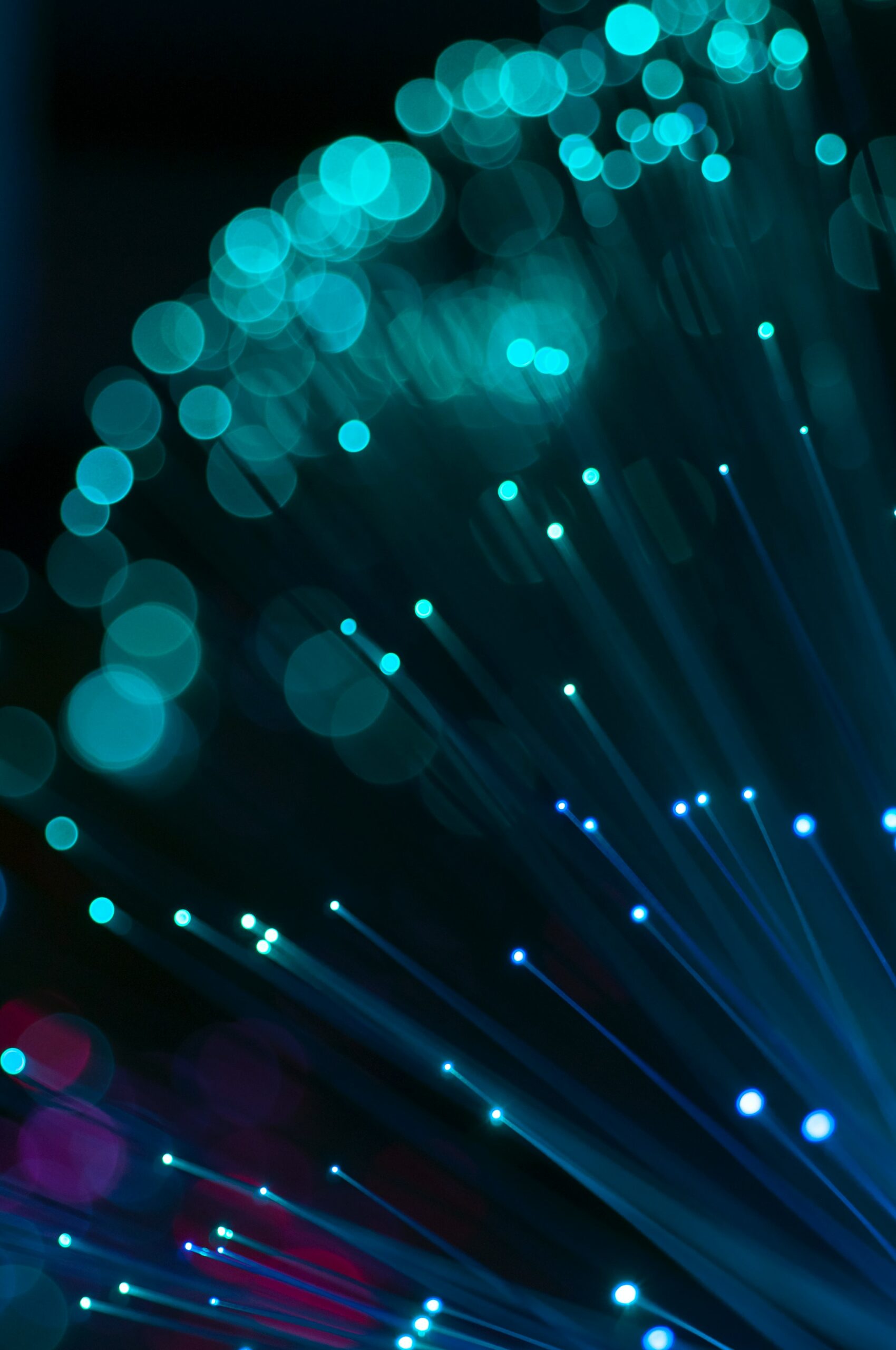In the era of digital transformation, organizations are trying to build a secure foundation to take benefit of the business advantages brought by the Internet of Things IoT. In short, the IoT is fundamentally changing the business equation. Internet of Things (IoT); Bringing together mobility, automation and data analytics trends will profoundly change the way organizations collect data and information. This process has the potential to transform business. IoT refers; to physical objects through the use of embedded sensors, actuators, and other devices that can collect and transmit information about real-time activity on the networking. Data collected from these devices can then be analyzed by the organization for use in several ways: reducing operating costs and increasing productivity. Thus, optimizing products and processes by developing new products and services. Allowing enterprises to present more personalized outcomes and services, enabling them to acquire more precise and accurate information about customer needs and preferences and proactively follow and monitor vital infrastructure, and creating more efficient and effective methodologies. The result is to have made businesses more innovative and more efficient. To improve and enhance user experiences by offering new or improved products and services, distinguishing a data-driven business from its competitors.
Enterprise systems and the Internet of Things are enabled by the latest developments in embedded systems, intelligent sensors, communication technologies, and Internet protocols. It is based on the fact that intelligent sensors and actuators offer a new class of enterprise applications. As the first stage of IoT, The current revolutions in the internet, mobile, device-to-device (D2D), and machine-to-machine (M2M) technologies can be counted. In the near future, IoT is predicted to bridge various technologies to enable new applications, connecting physical objects such as devices and machines to business applications to support intelligent decision-making.
Business operations in current generation businesses; include several levels and multiple types of decision making. These operations, which are complex systems, it has a large number of design variables, and decision-making requires real-time data collected from machines, processes, and business environments. Enterprise systems are used to support all these data collection, communication, and decision-making activities. Therefore, information technology (IT) infrastructure needs adaptation for a dynamic and distributed environment.
It is inescapable in the coming days that IoT will increase the system’s efficiency, build new business models and synchronize most of the physical operations with digital assets in real-time. Cloud and Big Data technology; will become indispensable for Enterprise systems as they provide scalability and intelligent insights. The ultimate purpose of IoT processes; is to create insights that enable faster, more accurate, and appropriate decision making and foster a more customer-focused business.

IoT Scenarios in Crucial Industries
An increasing number of physical objects are realizing the idea of the Internet of Things. Providing a promising opportunity to build robust industrial and enterprise systems, IoT leverages the growing prevalence of radio frequency identification and wireless communication with mobile and sensor devices. A prime example of such objects is GPS-tracked vehicles that connect to tracking and control systems to enable intelligent logistics. Or machines with Programmable Logic controllers (PLCs) associated with asset performance management systems. There are other areas where IoT can play a remarkable role and improve our quality of life. These sectors include the transportation, healthcare, industrial automation, retail, real estate, and hospitality industries. From the perspective of developments in the industrial automation sector in Industry 4.0, Robotic Process Automation (RPA) is being leveraged to make decisions about current stock based on data from IoT data sensors in warehouses, such as replenishing inventory and cross-validating with a customer’s order.
IoT solutions pledge to make enterprises brighter and more prosperous, and booming at what they do. These benefits are particularly noticeable in specific sectors.
• Health Service
IoT; has the potential to help promote better care, reduce costs and improve outcomes by redefining how people, technology, and devices interact and connect with each other in the healthcare industry.
• Education
IoT plans to change and improve both learning and teaching experiences in connected classrooms. Thus, it positively enhances how schools and campuses can monitor operations and safety for both primary and secondary education.
• Hospitality
IoT solutions provide the hospitality industry with many opportunities to better serve customers, increase the efficiency of operations, and differentiate by offering differentiated services.
• State
The IoT extensively presents opportunities for government agencies to deliver higher-quality services. It creates an experience of growth and improvement to find innovative ways to streamline processes, reduce costs, and add new value for citizens.
• Transportation
Being at the center of the forces reshaping transportation, IoT; will provide more splendid safety, more efficient transportation, enhanced vehicle and aircraft maintenance, and strategic traffic management.
Challenges of IoT Deployment
IoT brings performance to network infrastructure with increased security risks from all endpoints. It also brings with it unprecedented data flows that present operational and management challenges. To rigorously address these issues, organizations need to modernize and adapt their old-fashioned network patterns to sustain new levels of network intelligence, automation, and security. Organizations need a network infrastructure that is easy to manage and operate while securely processing large data streams while being affordable. There are many factors that need to provide this required infrastructure.
First, there should be a simple, automated process for IoT device engagement. Large IoT mechanisms; can retain thousands of appliances or sensors simultaneously, and managing all these endpoints manually is very complex and error-prone. With automatic placement, it is easily possible for the network infrastructure to dynamically recognize devices and assign them to the secure network accordingly. Another factor is the smooth and efficient operation of the IoT system. Organizations can achieve efficiency by providing the right network resources. Many devices in the IoT system provide mission-critical information that requires a certain level of QoS. For example, some use cases require appropriate bandwidth reservations on a high-performance network infrastructure to ensure service delivery and reliability. Providing a secure environment against cyber attacks and data loss should be another concern of organizations. Networked devices and sensors will reason a correspondingly large number of potential attack vectors. Security is critical to reducing cybercrime risks. Protection is required at many levels, including the containment of IoT networks themselves.
IT professionals are making detailed and meticulous plans for more IoT. IT professionals in different industries are planning already more and more effective use of IoT solutions in the near future. According to the 451 Research 2017 Trends in the Internet of Things survey, 67 percent of IT professionals who responded said their company had either already deployed an IoT solution or had an IoT system as a pilot. Twenty-one percent of those surveyed claimed that their company plans to deploy their IoT solution within 12 months, while 11 percent claimed that their company’s plan to implement IoT is more than a year.
IoT Combines an Organization’s Exposure to Cybercrime
With the growth of IoT, the proliferation of sensors and connected devices dramatically expands the network attack surface. An explosion in cybersecurity threats is occurring. We can say that IoT is sensitive because many IoT devices are produced quickly without security in mind or implemented by companies that do not understand current security requirements. As a result, IoT systems are increasingly becoming the weak link in enterprise security. If we talk about examples of this, In October 2016, there was a distributed denial-of-service attack on Dyn that crashed much of the internet. This attack was carried out through hacked networked devices such as security cameras and digital video recorders. Another issue is; Hackers attacked the network of the San Francisco transit system Muni in November 2016. It rendered ticket machines and other computing infrastructure inoperable as part of a ransomware scheme. Or we can talk about the attack in January 2017 on the electronic key system at the Romantik Seehotel Jaegerwirt in Austria. It left guests locked in their rooms and the hotel’s own computer system until the hotel paid a ransom of two Bitcoins.

IoT Limitation
To enable IoT coverage, profiles must be assigned to all users, devices, and applications within the organization’s network. These profiles are; defined roles, access authorizations, QoS levels, and other policy information. In addition, this information is transmitted to all switches and access points in the network. Devices should be placed in “virtual containers” using network virtualization techniques which allow multiple networks and devices to use the same physical infrastructure. It should also be valid while remaining isolated from the rest of the network. In these created virtual containers, QoS and security rules need to be enforced. If a breach occurs in a part of the virtual network, the network so that other devices or applications in other virtual networks are not affected; must be separated by virtual containers. In this process, when a new IoT device is connected to the network, it automatically recognizes the network profile and assigns the device to the appropriate virtual environment. Communication is limited only to the devices in that virtual environment and the application in the data center that controls these devices. Since all users also have profiles in this network, access to IoT virtual containers is limited to authorized individuals and groups, while the security level is increased to a sufficient level.
In-depth Security
In addition to IoT coverage, enterprise-built IoT network technologies must provide layered security at multiple levels of the network. For example, user-level profiles need to ensure that users are authenticated and authorized with appropriate access rights. At the device level, the network must attempt to authenticate devices and comply with established security rules. Application-level networking; It should be able to create rules about each group of applications or devices, including blocking, restricting bandwidth, and managing who can access which device. At the public network level, well-protected keys and diversified codes should be used. Briefly, A well-rounded system must be in place to protect networks from internal vulnerabilities, code vulnerabilities, embedded malware, and potential backdoors that could compromise switches, routers, and other mission-critical hardware. And this system, Intelligent analytics, should be supported by the use of deep packet inspections and other technologies to detect the types of data and applications moving across the network. This will make it possible to quickly identify unusual network traffic patterns and unauthorized activity, and network intrusions.
IoT devices pose a risk to assets across the entire network. Containers must be set up via virtual network segmentation to isolate IoT devices and the applications that control them. This will reduce threats without the cost or complexity of separate networks.
End-to-end Operational & Network Management
End-to-end operational and professional network management solutions should provide significant operational and management advantages. Institutions; In order to eliminate the need for CAPEX investment in multiple physical infrastructures, it should turn to solutions that enable numerous separate virtual networks to operate on a single shared infrastructure. A standard set of network services and a policy framework of Unified Access solutions and wired and wireless technologies should be established. Thus, it becomes interoperable as a single, robust network with a standard authentication scheme and a single authentication database. This end-to-end network management system added to the system; should have one control mechanism for all factors of the infrastructure, including management of both wired LAN and wireless WLAN networks. Organizations are also encouraged to choose management systems that provide a single window to manage virtual environments, switches, access points, and all other components of the network.
In short; in the digital transformation of enterprises, a lot of factors and innovations are there companies should recover. If you need a hand on this transformation process, Cool Digital’s enthusiastic team is at your disposal!






Son Yorumlar